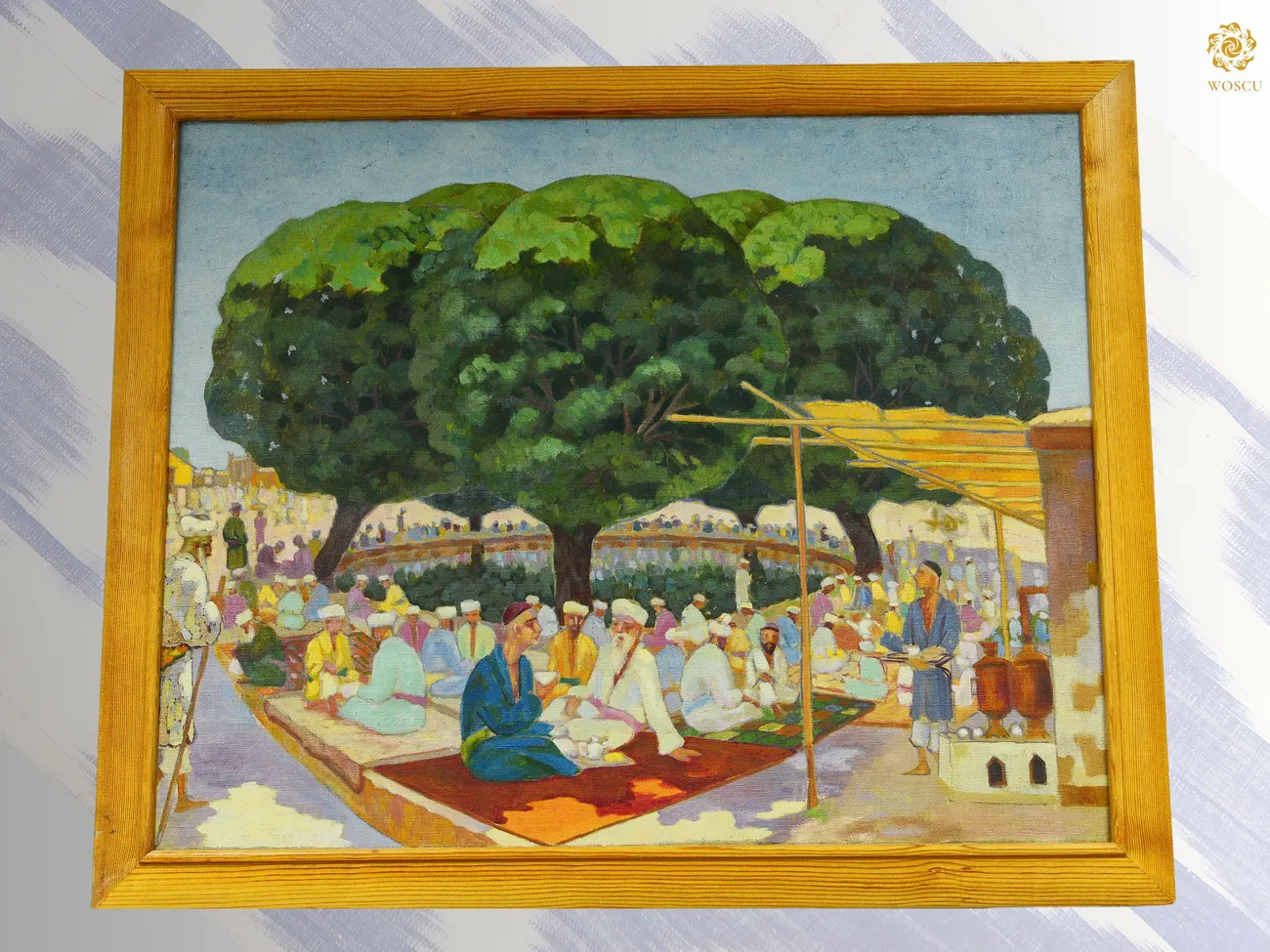
He lived in Uzbekistan from 1917 to 1966 and was also one of the founders of the national school of fine arts. In the early 1920s, O. Tatevosyan sought ways to comprehend the national identity in painting. He studied the Oriental miniature and sought to continue its traditions in his works with a clear certainty of each item, a special decorative colour, a strict rhythm of the composition. The artist’s paintings are full of some kind of amazing light.
As noted by researchers, the desire to transform life into a beautiful world is preserved throughout the artist’s work. Of course, the collection of the State Museum of Arts has its own specifics. For example, it presents a few late works by U. Tansykbaev: “The Black Sea”, “The Birth of the Charvak Sea” and “Lake Senezh”, while, for example, P. Benkov is represented by many famous canvases, such as “The Girl with the Dutar”, ”The Betrothed Tatar Girl”, “Shah-i-Zinda”, “A Gift to the Fighter”, “Emir official”, “Bazaar in Bukhara”. Every piece of art represented in the Museum contributes to a better understanding of the talents of great artists.
The skill of U. Tansykbaev as a landscape painter astonishes even in small paintings. The main source of inspiration in the late work of the artist was always nature. A special feeling of belonging to the life of the homeland and admiration for the unique originality of Central Asia and its mysterious beauty are reflected in his best works.
You can learn more about this topic in the book-album “The Collection of the State Museum of Arts of Uzbekistan” (Volume XIII) from the series “Cultural legacy of Uzbekistan in the world collections”.
The general sponsor of the project is the oilfield services company Eriell-Group.
